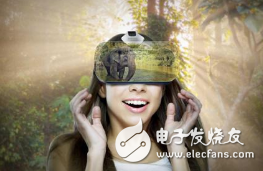Although the VR industry has entered a downturn, it hasn't stopped major manufacturers from investing. Perhaps they don't fully understand what VR is, but the strong signals from capital suggest that this could be the next big opportunity. These companies are pouring real money into an industry valued at $100 billion, and entrepreneurs who saw the excitement started to flood in. Listed companies, not wanting to be left behind, began competing for VR projects, aiming to create the next big investment for their limited partners with returns of ten or even hundreds of times.
As of the third quarter of 2017, the total AR/VR investment over the past 12 months reached $1.8 billion, with $300 million invested just in the last quarter. Both investors and users have shown more rational attitudes, indicating that the domestic VR industry is moving away from its initial over-enthusiasm.
The reality presented to users through VR is an artificial world created by computers, containing images and sounds that can be influenced by the user. Its core features are often described as "immersion, interaction, and imagination."

Augmented Reality (AR) involves overlaying digital information onto the real world using technology, allowing users to perceive the virtual environment as part of their surroundings through devices. It represents a key interface in the future of human-computer interaction.
The VR industry experienced a rollercoaster in 2016, with periods of intense hype followed by a cooling off. Ultimately, the value of the entire VR industry failed to impress early adopters. The current so-called "cold winter" stems from the fact that the products on offer haven't yet captured the attention of these early users. In other words, the technology's maturity, service systems, pricing, and overall user experience still fall short of driving sustainable growth in the industry.
However, many of the challenges facing VR are gradually being addressed. Global tech giants like Google, Microsoft, Samsung, and Qualcomm have entered the space, contributing to the establishment of industry standards. At the same time, numerous smartphone manufacturers have also joined the VR movement, helping to accelerate the development of the entire ecosystem.
In the first half of 2017, VR investment showed signs of softening, and both corporate and venture capital investors were actively seeking opportunities in mobile AR. According to Digi-Capital’s latest "AR/VR Report" and data from the Deal Database, for every $10 invested in the tech sector, $4 was directed toward AR/VR. Additionally, $1 was allocated to games, as well as to photos and videos.
So, how did the VR industry continue to struggle in the first half of the year? Every successful business needs a closed-loop system. When there's good hardware and compelling content, it attracts more users. More users lead to higher revenue through payments, ads, and other models. This revenue then encourages developers to create better products, forming a positive cycle. As this loop expands, the industry matures, and capital begins to flow in.
According to public data, China's VR market is growing rapidly. It's expected to exceed 10 billion yuan in 2018, with a compound annual growth rate of over 80% in the next five years. By 2021, China is projected to become the world's largest VR market, with an industry size reaching 79.02 billion yuan.
Although VR investment was relatively low in the first half of 2017, interest in mobile AR began to rise. Experts remain uncertain about whether investors focusing on mobile AR will support smart glasses, VR, or mobile VR startups.
By the end of 2018, platforms like ARKit, ARCore, and Camera Effects had already reached over 900 million users. Mobile AR startups may take up to 12 months to start generating revenue, meaning that investors and the VR community need patience as the early AR market develops. New portfolio companies are likely to dominate during this phase.
Looking ahead, AR/VR technology holds immense potential for future applications. Each day brings new ideas and solutions that enhance our daily lives. The digital world is becoming increasingly creative, offering people the ability to freely move between virtual cyberspace and the physical world. The lines between the virtual and the real are set to blur further in the coming years.
Medical PCB manufacturer,Medical PCB Assembly,Medical PCB,Medical device PCB Design,Medical PCB Assembly Quotes
Dongguan Jingling Communication Technology Co., Ltd. , https://www.jlpcba.com